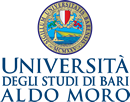Sviluppare la consapevolezza morfologica: linee guida per un intervento didattico
DOI:
https://doi.org/10.15162/1970-1861/1672Parole chiave:
Morphological awareness, teaching lexicon, lexical morphologyAbstract
The present paper discusses the principles that inspired a teaching intervention aimed at fostering middle school pupils’ morphological awareness, defined as the ability to reflect on words’ internal structure and to manipulate morphological components. Morphological awareness has in fact been acknowledged to positively impact on vocabulary growth and reading comprehension. In our paper we outline the main principles on which our intervention was grounded. Specifically, we highlight the importance of providing morphologically complex words in meaningful and engaging contexts; promoting an inductive approach to the analysis of word structure and meaning; proposing activities which make morphological patterns and sublexical constituents less abstract and which encourage morphological problem-solving strategies.Riferimenti bibliografici
Anglin, J. M., 1993, Vocabulary development: a morphological analysis, Monographs of the society for research in child development, 58, 65.
Balboni, P., 2002, Le sfide di Babele. Insegnare le lingue nelle società complesse, Torino, UTET.
Bowers, P. N., Kirby, J. R., Deacon, S. H., 2010, “The Effects of Morphological Instruction on Literacy Skills: A Systematic Review of the Literature”, in Review of Educational Research, 80(2), pp. 144-
Cain, K., Oakhill, J., 2011, “Matthew effects in young readers: Reading comprehension and reading experience aid vocabulary development”, in Journal of Learning Disabilities, 44, pp. 431-443.
Carlisle, J. F., 1995, “Morphological awareness and early reading achievement”, in L. Feldman (a cura di), Morphological aspects of language processing, Mahwah, NJ, Lawrence Erlbaum. pp. 189-209.
Carlisle, J. F., 2000, “Awareness of the structure and meaning of morphologically complex words: Impact on reading”, in Reading and Writing, 12, pp. 169-190.
Carlisle, J.F., 2010, “Effects of Instruction in Morphological Awareness on Literacy Achievement: An Integrative Review”, in Reading Research Quarterly, 45, pp. 464-487.
D’Annunzio, B., 2014, “I principali problemi dell’italiano L2 dello studio”, in P. Balboni, M.C. Coonan (a c. di), Fare CLIL. Strumenti per l’insegnamento integrato di lingua e disciplina nella scuola secondaria, Torino, Loescher Editore, pp. 125-132.
Deacon, S. H., Kieffer, M. J., Laroche, A., 2014, “The relation between morphological awareness and reading comprehension: Evidence from mediation and longitudinal models”, in Scientific Studies of Reading, 18(6), pp. 432-451.
Fukkink, R. G., de Glopper, K., 1998, “Effects of instruction in deriving word meaning from context: A meta-analysis”, in Review of educational research, 68(4), pp. 450-469.
Goodwin A.P., Ahn S., 2010, “A meta-analysis of morphological interventions: effects on literacy achievement of children with literacy difficulties”, in Annals of Dyslexia, 60(2), pp. 183-208.
Goodwin, A.P., Ahn, S., 2013, “A Meta-Analysis of Morphological Interventions in English: Effects on Literacy Outcomes for School-Age Children”, in Scientific Studies of Reading, 17:4, pp. 257-285.
Goodwin, A. P., Petscher, Y., Carlisle, J. F., Mitchell, A. M., 2017, “Exploring the dimensionality of morphological knowledge for adolescent readers”, in Journal of Research in Reading, 40(1), pp. 91-117.
Guthrie, J. T., Wigfield, A., 2000, “Engagement and motivation in reading”, in M. L. Kamil, P. B. Mosenthal, P. D. Pearson, R. Barr (a cura di), Handbook of reading research, Vol. 3, Lawrence Erlbaum Associates Publishers, pp. 403-422.
Lo Duca, M. G., 2018, Viaggio nella grammatica, Roma, Carocci.
Kieffer, M.J, Lesaux, N.K., 2012a, “Development of morphological awareness and vocabulary knowledge in Spanish-speaking language minority learners: A parallel process latent growth curve model”, in Applied Psycholinguistics, 33(1), pp. 23-54.
Kieffer, M. J., Lesaux, N. K., 2012b, “Direct and indirect roles of morphological awareness in the English reading comprehension of native English, Spanish, Filipino, and Vietnamese speakers”, in Language Learning, 62(4), pp. 1170-1204.
Kirby, J. R., Bowers, P. N., 2017, “Morphological instruction and literacy. Binding phonological, orthographic, and semantic features of words”, in K. Cain, D. L. Compton, R. K. Parrilapp (a cura di), Theories of reading development, pp. 437–462.
Kormos, J., Smith, A. M., 2012, Teaching languages to students with specific learning differences, Bristol, Multilingual matters.
Kuo, L, R. C. Anderson, 2006, “Morphological awareness and learning to read: A cross-language perspective”, in Educational Psychologist, 41, pp. 161-180.
McBride-Chang, C., Twila, T., Jeung-Ryeul, C., Hua, S., Fletcher, P., Stokes, S.F., Wong, A., Kawai, L., 2008, “What’s in a word? Morphological awareness and vocabulary knowledge in three languages”, in Applied Psycholinguistics, 29, pp. 437-462.
Nagy, W. E., Berninger, V. W., Abbott, R. D., 2006, “Contributions of morphology beyond phonology to literacy outcomes of upper elementary and middle-school students”, in Journal of Educational Psychology, 98, pp. 134-147.
Reed, D.K., 2008, “A Synthesis of Morphology Interventions and Effects on Reading Outcomes for Students in Grades K–12”, in Learning Disabilities Research & Practice, 23, pp. 36-49.
Stahl, S., Nagy, W., 2005, Teaching Word Meaning, Erlbaum, Malwah.
Swain, M., Lapkin S.,1995, “Problems in output and the cognitive processes they generate: a step towards second language learning”, in Applied Linguistics, 16(3), pp. 371-391.
Schmidt, R., 1990, “The role of consciousness in second language learning”, in Applied Linguistics, 11(2), pp. 129-158.
Tannenbaum, K. R., Torgesen, J. K., Wagner, R. K., 2006, “Relationships between word knowledge and reading comprehension in third-grade children”, in Scientific Studies of Reading, 10, pp. 381-398.





